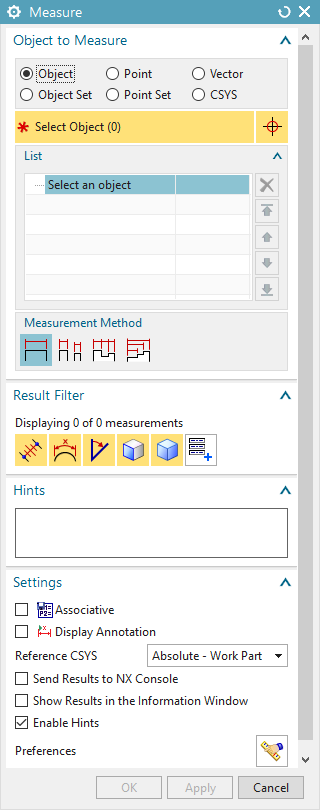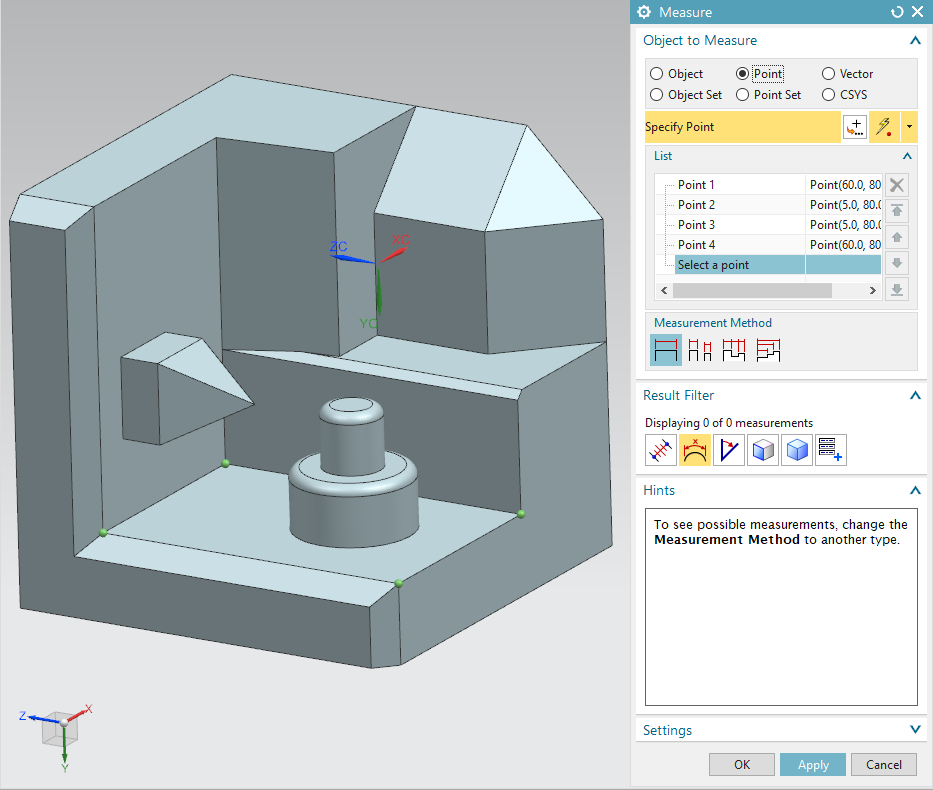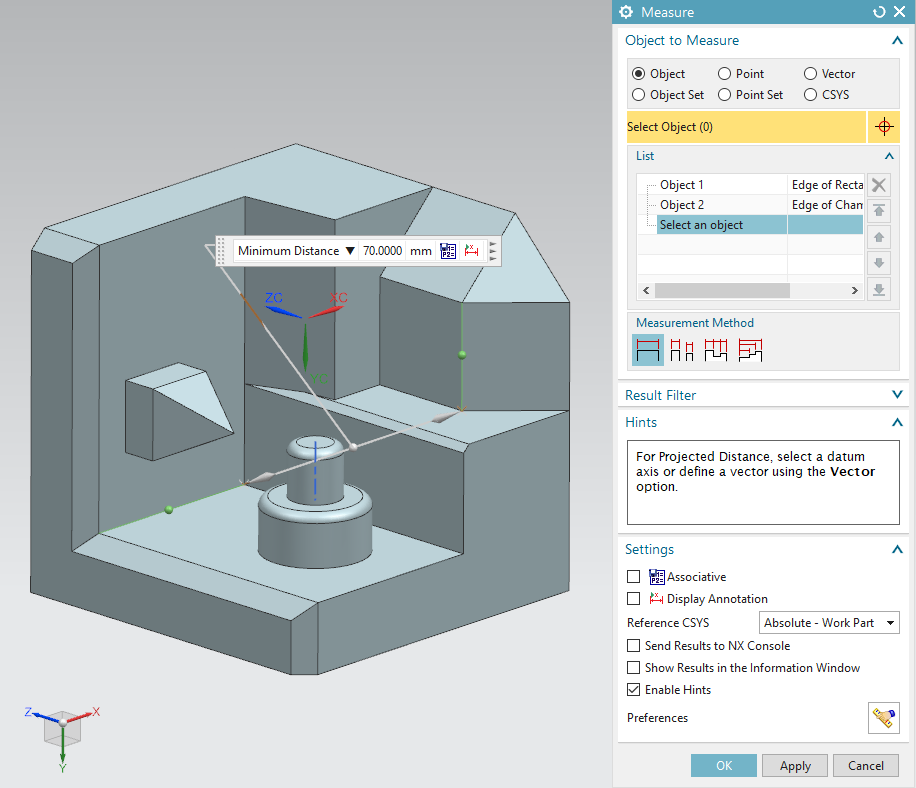Measure is the central function to perform all possible types of measurements on components and building sites. The possible measurements include the measurement of lengths and angles as well as area and volume properties.
First select the Measure command. A dialog box appears in which all functions can be controlled (see figure "Measure").
command. A dialog box appears in which all functions can be controlled (see figure "Measure").
Basic functionality concept
The idea of the Measure command is to select any number of objects, NX will then evaluate the possible measurements to match those objects. The number of evaluated measurements can then be limited using filters, so that at the end, for example, only the distance between two edges is measured, but not the angle between them.
Quick Measure
As soon as the dialog is opened, characteristic properties of edges, surfaces, etc. are displayed when the cursor hovers over them (see figure "Quick Measure").
Objects for measurements
In order to generate measurements that go beyond the simple display of properties, the objects relevant for measurement must first be selected or defined. A short description of the different object types can be found in the following table.
| Typ | Beschreibung |
|---|---|
| Object | All objects already present in the component, for example edges, curves, bodies, auxiliary points, etc. can be selected. |
| Object Set | A set of similar objects, e.g. to determine a total length or volume. |
| Point | A single auxiliary point created only for this measurement. |
| Point Set | A set of points created only for this measurement. |
| Vector | A vector created only for this measurement, for example to measure the projected distance between two objects. |
| CSYS | A coordinate system that is only created for this measurement. |
Measurement methods
The measurement methods are of particular interest when selecting several similar objects. In the context of these tutorials, the Free option is required for the measurement methods available for selection. The functionality is explained here with the example of four points
(see Figure "Example measurement method")
. In the following you find the explanation to the individual measuring methods.
| Icon | Name | Description |
|---|---|---|
| Free | NX selects the possible measurements itself, as far as this is unambiguous. If there are several points, for example, there are various possibilities to carry out measurements between these points. | |
| Pairs of Objects | NX creates the possible measurements for each pair of objects. For example, in the case of four points, the distance between each two points is measured. | |
| Chain of Objects | NX creates the possible measurements between the following objects in the list, e.g. four points between point 1 and point 2, between point 2 and point 3, etc. | |
| From Reference Object | NX always creates the possible measurements in relation to the first object in the list. For example, in the case of four points, always point 1. |
Measurement filters
Various measurement filters can be used to remove unneeded types of measurements. In the following you will find the different filters with their descriptions.
| Icon | Name | Description |
|---|---|---|
| Distance | Distance between two objects | |
| Curve/Edge | Edges and curves (radii, length, starting point, etc.) | |
| Angle | Winkel zwischen zwei Objekten oder drei Punkten | |
| Face | Angle between two objects or three points | |
| Body | Volume properties (volume, surface, etc.) | |
| Others | Other measurements, such as the orientation of a coordinate system |
Hints
If you have not turned on the hints in the Measure dialog settings, turn them on. As soon as you have selected one or more objects, you will receive hints for further possible measurements. If, for example, you have added two edges to the measurement, you will see the message that you can define a vector to determine the projected distance
(see figure "Hints").
Associative measurements
To save measurements permanently and associatively, you can create an annotation and/or an association for one or more measurements, for example for the length of an edge (see figure "Measurements").


